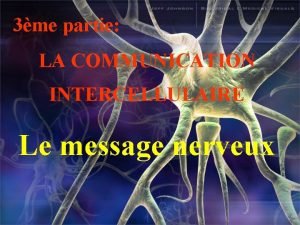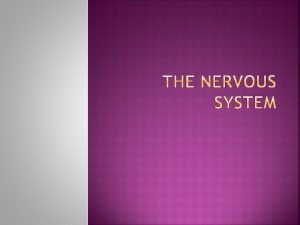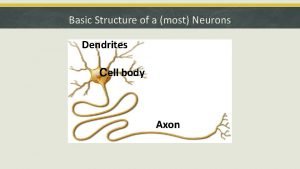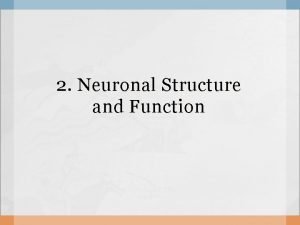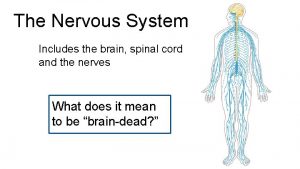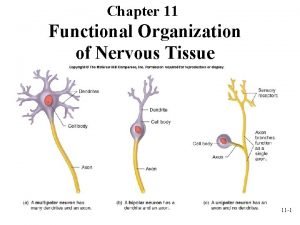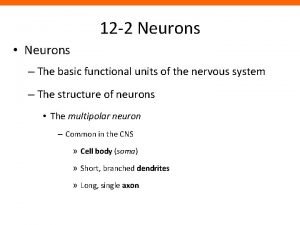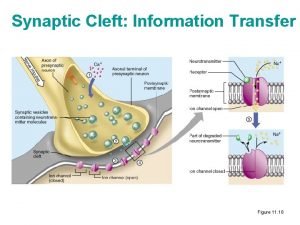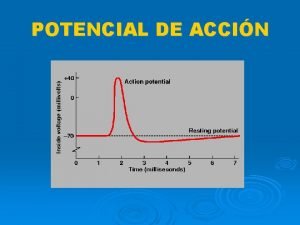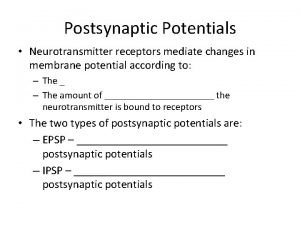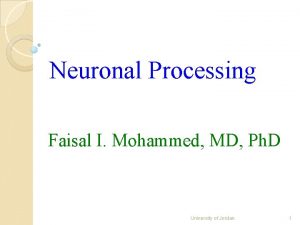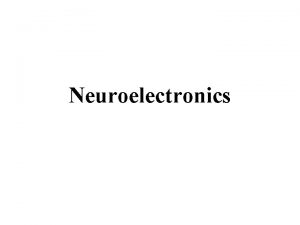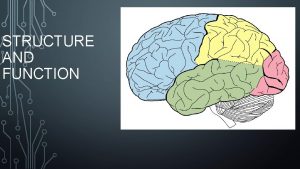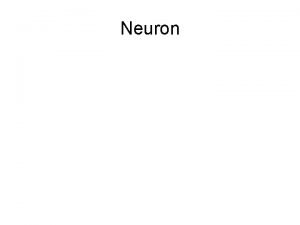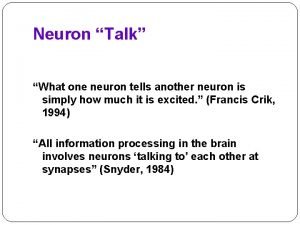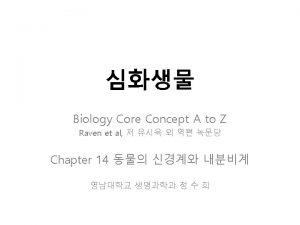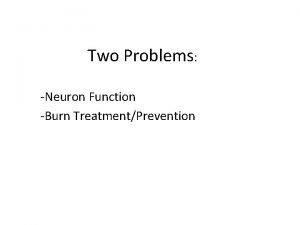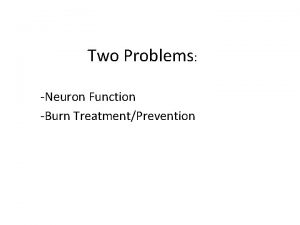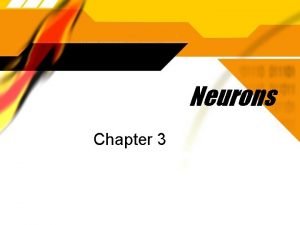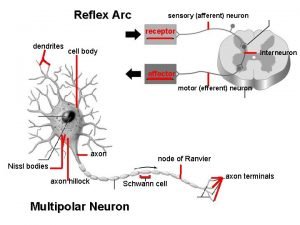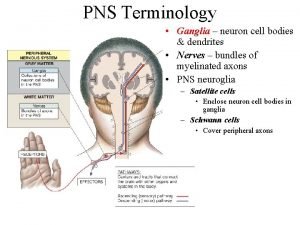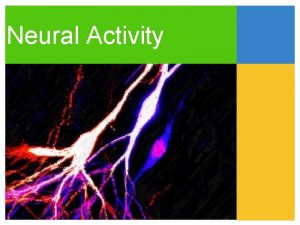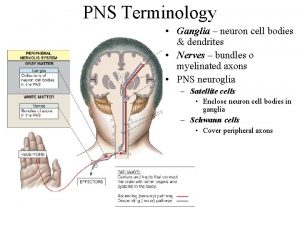2 Neuronal Structure and Function Neuron Apica Dendrites














- Slides: 14

2. Neuronal Structure and Function

Neuron Apica Dendrites Basal Dendrites Myelin sheath Preynaptic cells Axon Synapse Postsynaptic cells Pyramidal cell

Cortical Columns Unit of Function From http: //www. iscarecrow. com/wp-content/uploads/myrvelcolumns. html

Dendritic Spines Most synapses between pyramidal cells are located on spines. Human cortex includes neurons (85%, pyramidal cell), . synapses Efficient integrator of different postsynaptic signals. Changing size and shape over timescales of seconds to minutes and of hours and days: a remarkably dynamic structure.

Brodmann’s Area (4) Primary motor cortex Central sulcus Sylvian fissure (lateral sulcus) (1 -3) Primary somatosensory cortex (17) Primary visual cortex (41) Primary auditory cortex Primary cortex – related to language processing

Many relay neurons in • Inferior frontal lobe • (44, 45) Superior temporal lobe (22, 42) between-modality Associations

Homunculus Topographically ordered projection are established early in life. They can be altered by Brain injury or repeated exercises. From http: //faculty. etsu. edu/currie/images/homunculus 1. JPG

Action Potential From http: //www. wikipedia. org

Principles reflecting universal neuroanatomical and neurophysiological properties of the cortex 1. 2. Afferent and efferent projections are ordered. a. They reach, or insert from, primary areas. b. Sensory and motor projections are organized topographically. Intracortical connections permit mixing of afferent and efferent information. a. Adjacent neurons are heavily connected and form local clusters. b. Primary area tend not to be linked directly, but through relay area. c. Adjacent areas are connected with high probability. d. There is a lower but still good chance for connections between areas farther apart(15~30%). Homotopic areas of the two hemispheres tend to be connected. Connections between areas tend to be reciprocal. 3. e. f. Synaptic connections between neurons are modified depending on their activity. (correlation learning, between modality) a. Neurons that fire together strengthen their mutual connections. b. Neurons that fire independently of each other weaken their connections.

Functional Webs I. III. IV. That are strongly connected to each other That are distributed over a specific set of cortical areas That work together as a functional unit Whose major parts are functionally dependent on each other so that each of them is necessary for the optimal functioning of the web. Established terms : cell assembly, neuronal ensemble. Neurons in both areas should a. Share specific response features b. Show these response feature only if the respective other area is intact.

A view of cortical Function The participating neurons are being bound into strongly connected webs of neurons, functional units that represent cognitive entities with sensory and action aspects. • Action-related : frontal areas • Sensory-related : posterior areas Questions (answers in latter chapter) 1. 2. 3. 4. What are the functional dynamics of these distributed neuronal representations? (ch 10, 12) Where exactly are they localized, or, formulating the question in a slightly more adequate manner? (ch 4, 6) How can the internal wiring of the functional webs be specified? ( Is it sufficient to assume that the formation of these network is driven by associative learning principles, or do genetically determined factors play a role as well?

Temporal Dynamics in Functional Webs: Ignition and Reverberation Ignition : stimulation of a fraction of its neurons can lead to a full activation of the entire population. Memory and ignition. • Think of Gestalt principle.

Filtering based on Gestalt Principles From http: //rubenswieringa. com/nhl/the-secret-sales-pitch

Short-term(active) Memory Short-term Memory Operation Spikes/sec 0 Baseline S 5 10 Delay 15 M Post-Choice Time(sec) Proposed that activation of a distributed cortical neuron ensemble is reflected by coherent oscillatory activity of participating neuron.
 Dendrites et axones
Dendrites et axones Dendrites
Dendrites Dendrites analogy
Dendrites analogy Dendrites
Dendrites Bipolar neuron function
Bipolar neuron function Bipolar neuron function
Bipolar neuron function Bipolar neuron function
Bipolar neuron function Postsynaptic potential
Postsynaptic potential Function of multipolar neuron
Function of multipolar neuron 3 layers of spinal cord
3 layers of spinal cord Neuronal pool
Neuronal pool Graded potential vs action potential
Graded potential vs action potential Potencial de accion neuronal
Potencial de accion neuronal Neuronal pool
Neuronal pool Neural circuits the organization of neuronal pools
Neural circuits the organization of neuronal pools
